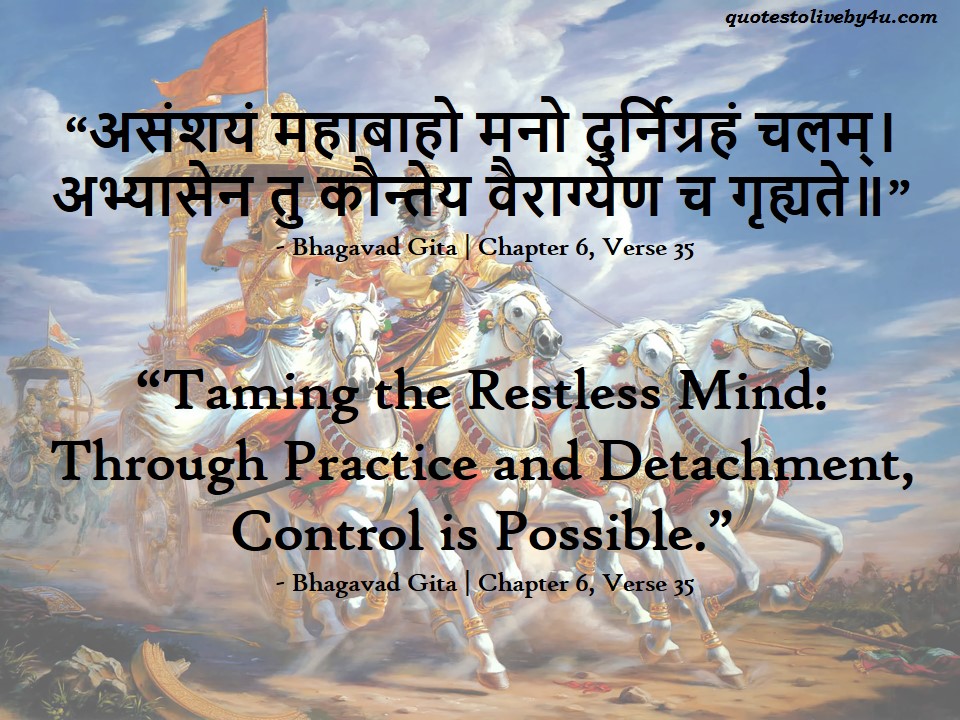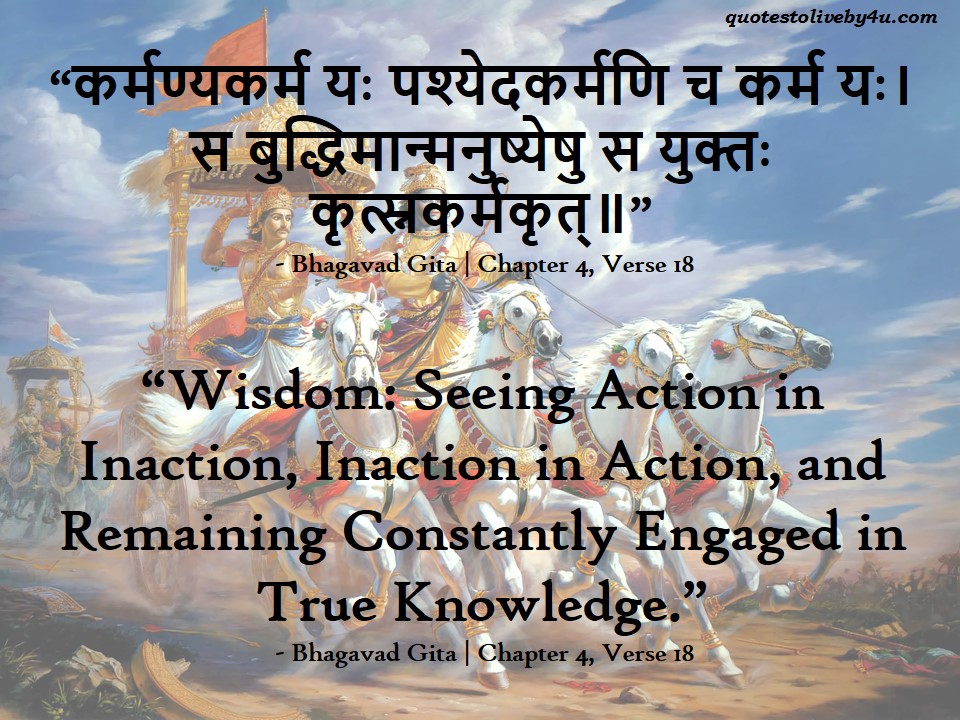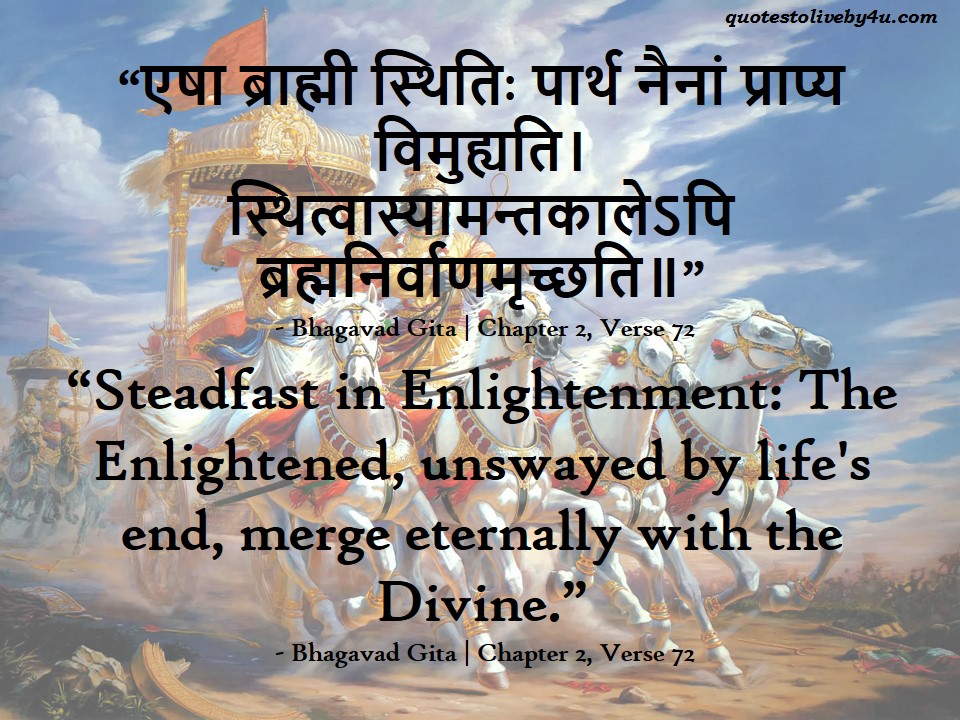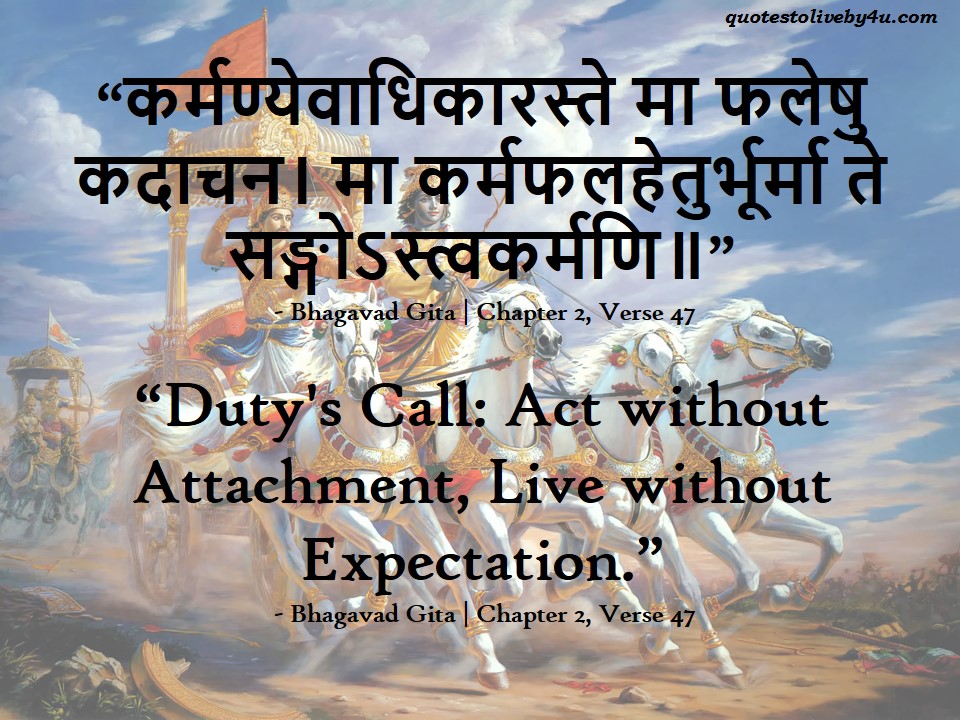This verse from Chapter 6, Verse 35 of the Bhagavad Gita acknowledges the challenges of controlling the restless mind and offers practical guidance on how to achieve mental mastery through practice and detachment. Let’s explore its meaning and practical applications through everyday examples:
Verse: "असंशयं महाबाहो मनो दुर्निग्रहं चलम्। अभ्यासेन तु कौन्तेय वैराग्येण च गृह्यते॥"
Translation: “Without doubt, O mighty-armed Arjuna, the mind is difficult to control and restless. But through regular practice (abhyasa) and by dispassion (vairagya), it can be controlled.”
Explanation with Examples:
- Meditation Practice: Suppose someone wants to develop a regular meditation practice to calm their restless mind. Initially, they may find it challenging to sit still and focus their thoughts. The mind might wander, bringing in distractions and restlessness. However, by adhering to a consistent meditation routine (abhyasa), and gradually detaching from distracting thoughts and external stimuli (vairagya), they can gain greater control over their mind. With time, they experience increased mental clarity and inner peace.
- Fitness and Exercise: Consider an individual aiming to maintain a disciplined exercise regimen. At first, they might struggle with the restless desire to skip workouts or indulge in unhealthy habits. However, by developing the habit of regular exercise (abhyasa) and cultivating detachment from excuses or unhealthy choices (vairagya), they can control their impulses and maintain a healthy lifestyle. Over time, their body and mind become more balanced and fit.
- Stress Management: In a high-stress job or situation, a person’s mind can become easily agitated and restless. Through the practice of stress management techniques such as deep breathing, mindfulness, and prioritizing self-care (abhyasa), they can learn to control their reactions to stressors. Simultaneously, they detach from unnecessary worries and anxieties (vairagya), leading to improved mental well-being.
- Spiritual Growth: On a spiritual path, an individual may face inner conflicts and doubts. They can work towards spiritual growth by regularly studying sacred texts or engaging in spiritual practices (abhyasa) while gradually letting go of material attachments and ego-driven desires (vairagya). Through this process, they gain greater control over their inner struggles and move closer to spiritual realization.
This verse underscores the inherent restlessness of the human mind and acknowledges that controlling it is indeed a formidable task. However, it provides a practical roadmap to achieve mental mastery. By consistently practicing mindfulness, discipline, and self-awareness (abhyasa) and simultaneously cultivating detachment from worldly distractions and desires (vairagya), individuals can gradually gain control over their minds and find inner peace and balance. It reminds us that with effort and detachment, even the most restless minds can find stillness and focus.
Know about Bhagavad Gita
The Bhagavad Gita, often referred to as the Gita, is a sacred scripture of Hindu philosophy and spirituality. It is a 700-verse dialogue between Lord Krishna and the warrior Arjuna, set on the battlefield of Kurukshetra during a time of moral crisis. The Gita is a part of the Indian epic, the Mahabharata.
The text addresses profound philosophical and ethical questions, exploring concepts such as duty (dharma), righteousness, devotion, selfless action, and the nature of reality. It offers guidance on how to live a life of purpose, integrity, and spiritual fulfillment while navigating the challenges of the world.
The Bhagavad Gita introduces various paths to spiritual realization, including Karma Yoga (the path of selfless action), Bhakti Yoga (the path of devotion), and Jnana Yoga (the path of knowledge). It teaches the importance of performing one’s duties without attachment to the results, maintaining equanimity in success and failure, and recognizing the interconnectedness of all beings.
The Gita’s teachings extend beyond religious boundaries, resonating with individuals seeking wisdom, ethical insights, and a deeper understanding of life’s complexities. Its universal principles have inspired thinkers, philosophers, leaders, and individuals from various backgrounds across the world. The Bhagavad Gita remains a timeless guide that encourages self-awareness, personal growth, and the pursuit of a harmonious and meaningful existence.




